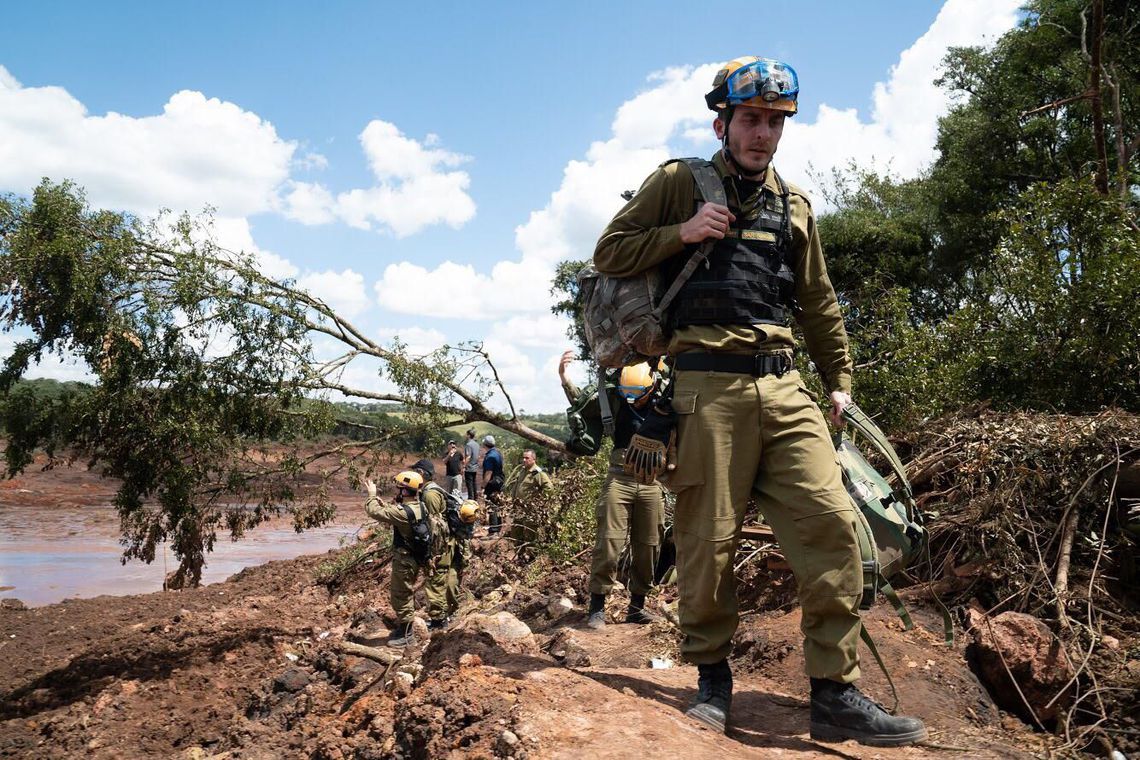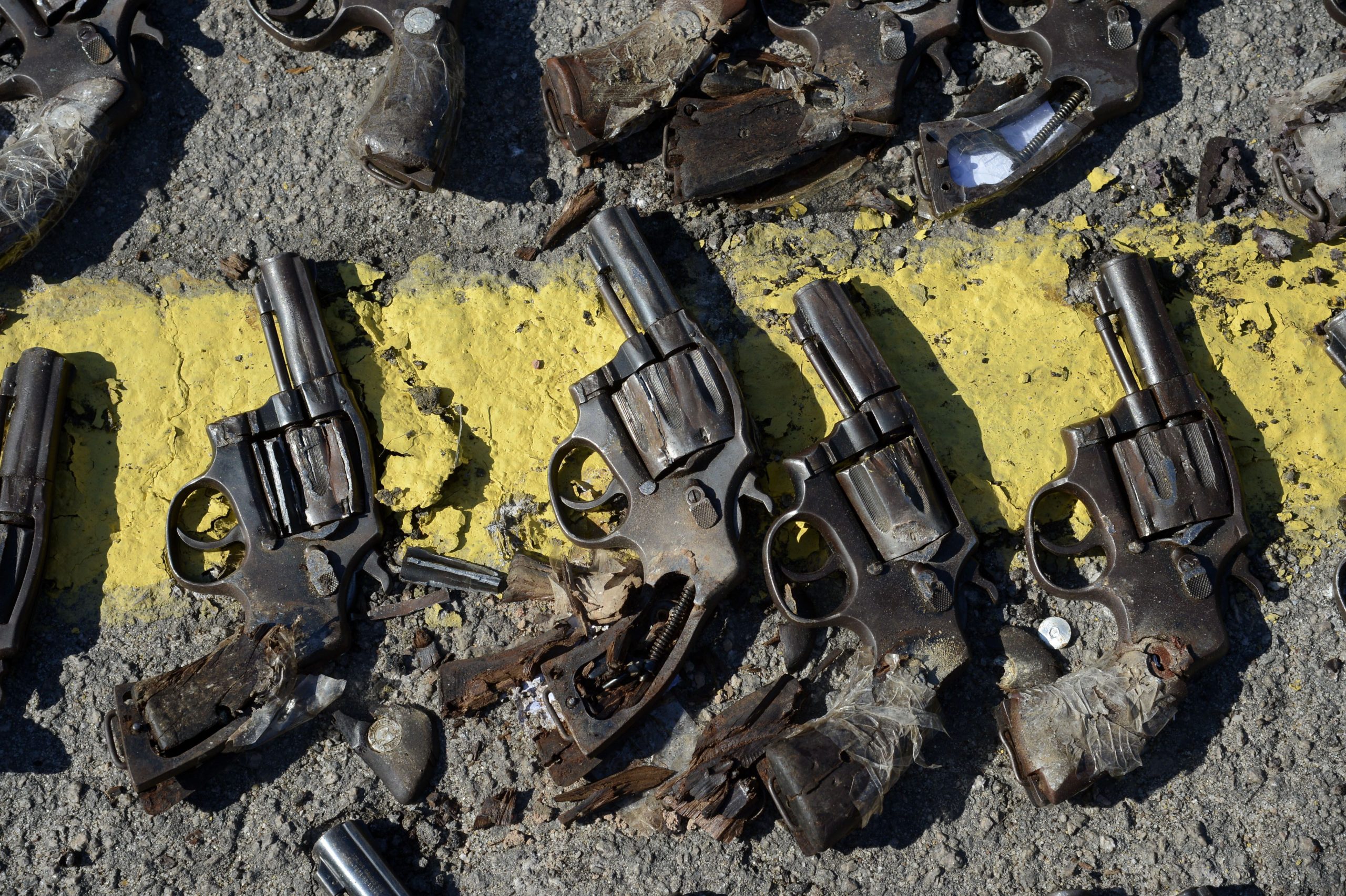Tragedy in Brumadinho: 3 Years of impunity and buried dreams
Proposals to change environmental legislation and lack of accountability for the crime could make one of Brazil’s biggest environmental and social disasters just another incident
 Equipe internacional apoia os trabalhos de busca e resgate de vítimas de Brumadinho (MG). Foto: Agencia Brasil
Equipe internacional apoia os trabalhos de busca e resgate de vítimas de Brumadinho (MG). Foto: Agencia Brasil
On January 25, 2019, the surveying and drilling technician Lieuzo Luiz dos Santos and four other colleagues were on the penultimate step of Dam 1 (B1) of the Córrego do Feijão Mine, owned by Vale, in the Minas Gerais municipality of Brumadinho. At nearly 70 meters above the ground, they had just finished drilling to install a piece of equipment that could measure the reservoir’s internal pressure. Despite the success of the assignment, the employees had very little time to celebrate, because the dam that stored the equivalent of 400,000 water trucks of the mine’s tailings collapsed in a tsunami of mud. Together with the collapse of the Fundão tailings dam, run by the mining company Samarco, in 2015, the event made its mark on the recent history of Brazil, and it is already three years old.
On that day, the intern Marina Costa had taken homemade bread and cake to eat with Lieuzo and her other colleagues, in the blue tent erected at the top of the dam. In two months, she was set to make her engagement official and also turn 25 years old. While they were having lunch, the assistant Olímpio Gomes Pinto noticed the restless behavior of the oxen that were grazing in the region. Nobody imagined what it could mean. After a while, the supervisor Noel Borges de Oliveira felt hungry and decided to take his colleagues down and have lunch in the cafeteria. The assistant Miraceibel Rosa was already gathering up the materials when Lieuzo noticed the blue tent sway. Without any wind at all. In a few seconds, they were all engulfed by the mud. Except Lieuzo, who, despite being dragged for nearly a kilometer, survived the disaster.
No accountability or culprits
According to the journalist Daniela Arbex, it was a tragedy foretold, as she explains in the book “Arrastados: Os bastidores do rompimento da barragem de Brumadinho, o maior desastre humanitário do Brasil” (Dragged: Behind the scenes of the Brumadinho dam collapse, the biggest humanitarian disaster in Brazil), published by Ed. Intrínseca. In the book in which she investigates the story of Lieuzo and other victims, she says that Vale already knew there would be no chance of escape from the place that the company itself described as a “self-rescue zone”.
“The mud continued on its course and, after passing over the railroad terminal, found no obstacle to prevent it from turning Vale’s administrative area, below the B1, into rubble. Just like the company predicted in its Flood Map, when it analyzed the possibility of a collapse of the dam nine months earlier,” wrote Arbex in her book. “In the event of a hypothetical bursting of the dam, the cafeteria, the medical center, the laboratory, the offices, the workshops and the Center for Discarded Materials, all roughly 1.5 km from the B1, would be buried. And, indeed, they were.”
With sad precision, Vale’s calculations also estimated that, in the event of a collapse, the flow of mud could kill more than 200 people. The final number was 270 – and firefighters are still looking for six more.
To this day, nobody has been arrested or prosecuted in the case. In November 2021, Vale and TUV SUD (which attested to the dam’s stability) were charged by the Federal Police, in addition to 19 other people. While the Public Prosecutor’s Office waits for the case to be brought before the federal courts to file the complaint, the Office of the Public Prosecutor for Labor Issues and Vale signed an agreement that provides compensation of BRL 700,000 to each spouse, child and father of the victims, individually, in addition to BRL 150,000 for siblings and a lifetime pension for dependents.
According to Vale, more than 11,400 people have been compensated through individual agreements and labor compensation to date. A total of BRL 2.7 billion has been committed, of which BRL 2.5 billion has already been paid.
The agreement also provides compensation for third parties. This is the case for the technician Lieuzo, who was up at the dam with his colleagues. However, in a statement on the television program Fantástico, he said he never even received a call from the company.
Agreement without transparency
In February 2021, Vale also signed a BRL 37.7 billion settlement agreement with the Minas Gerais state government. The agreement provides for cash transfer programs, school renovations and public health clinics in the municipalities of the Paraopeba river basin, basic sanitation projects and even the construction of a ring road in the metropolitan region of Belo Horizonte and improvements to the subway system.
The problem is that the agreement did not include the participation of the victims and those affected by the disaster. “The State and the Institutions of Justice claim by law to be the legitimate representatives of the affected people in the Paraopeba basin in the negotiations, but how can you trust a State that is completely dependent on iron ore, that is responsible for overseeing the safety of these dams and that, to an extent, directly benefits from the agreement that was signed?” asked Marina Oliveira, an affected person and member of the Archdiocese of Belo Horizonte, in an interview with Conectas in 2021.
In the same interview with Conectas, Letícia Aleixo, technical advisor for Caritas Minas Gerais, pointed out the lack of transparency. “When announced as a great deal, the company conveys an image of ‘responsibility’ and of ‘settling due obligations’, although the situation has not essentially changed for the affected families. Moreover, there are many other dams still at risk of bursting in the same state, driving even more families from their homes,” she said. In Brazil, in total, there are 122 dams in a critical state, according to 25 oversight bodies.
Read more:
Using this narrative, Vale’s reputation grows on the market, together with the price of its shares. The company also benefits from the fact that it will be in charge of implementing some programs and works, and from the elimination of some judicial investigations that would have been carried out independently, thereby remaining in control of the reparation process.”
In the third quarter of 2021 alone, Vale reported a net profit of USD 3.886 billion (more than BRL 21 billion), an increase of 33.6% from the same period a year earlier. The data were released by the company.
Environmental licensing bill paves way for new crimes
Another factor that concerns organizations working in the field of social and environmental rights is the passage through the Senate of the bill that relaxes environmental licensing. According to the bill, some types of dams may even be exempted from licensing.
The bill also states that, with the exception of projects classified as having significant potential environmental impact, the only requirement will be the so-called License by Adherence and Commitment, which is issued automatically without verification to entrepreneurs who declare they will comply with environmental regulations. Automatic licenses for entrepreneurs will therefore become the rule and licensing, the exception. According to Júlia Neiva, coordinator of the Defense of Socioenvironmental Rights program at Conectas, “the draft text creates loopholes so that licenses for dams like the Rio Doce and Brumadinho tailings dams have less oversight and control, making the occurrence of other large-scale environmental crimes possible”.
Problems with the proposed new Mining Code
In addition to all this, there is also the new Mining Code, which is being discussed in the Lower House of Congress. In a statement, civil society organizations claim that the bill “centralizes excessive duties in the federal government and restricts the oversight of mining activities to the National Mining Regulatory Agency”.
“The bill is not only technically and legally inconsistent, but it also represents another dangerous risk to the environment and to all Brazilian society, insofar as it seeks, in essence, to facilitate access to mineral resources by misguidedly and dangerously relaxing rules and procedures to control environmental and social impacts and damages,” reads the statement signed by Conectas, Greenpeace Brazil, INESC (Institute for Socio-Economic Studies), ISPN (Society, Population and Nature Institute), ISA (Socioenvironmental Institute), NOSSAS, SOS Mata Atlântica and WWF.
Read more:
- “Inconsistent, irresponsible and unconstitutional”, say organizations of new Mining Code
- Understand the 8 most problematic points of the environmental licensing bill
“The interest in changing these regulations makes it increasingly evident that environmental and social tragedies caused by large companies do not necessarily happen by chance. And, in addition to the lives that are lost in the mud, those who survive the disasters continue to suffer from systematic violations of human rights and environmental racism, in addition, of course, to the often irreparable damage to rivers and forests,” said Neiva.


